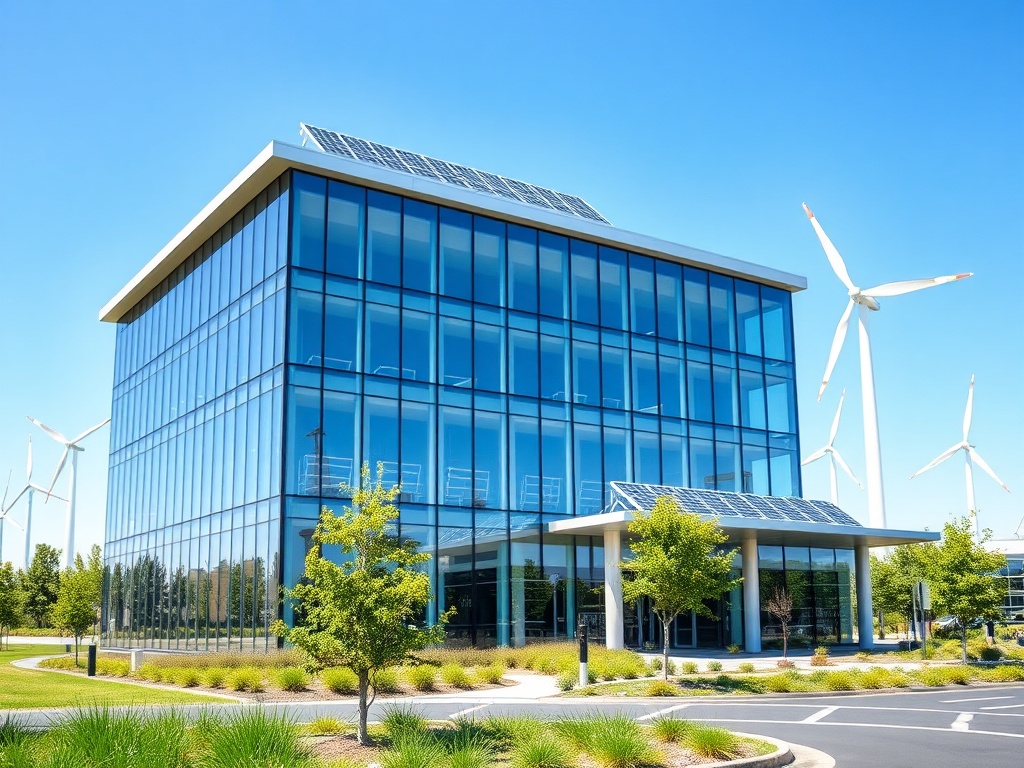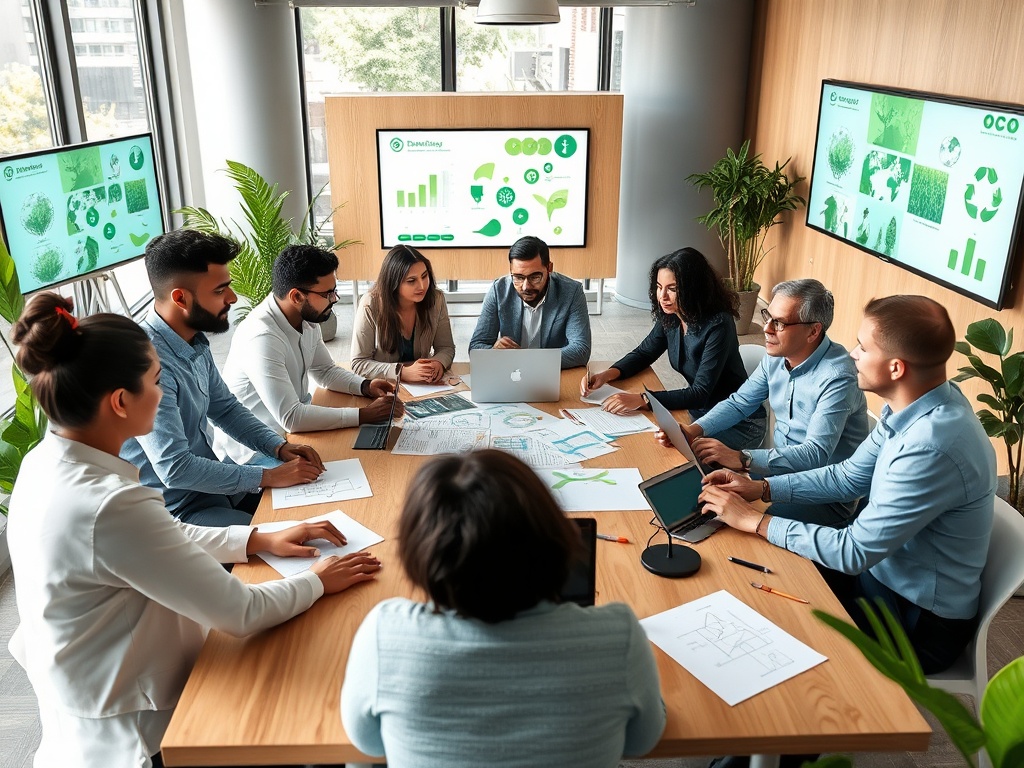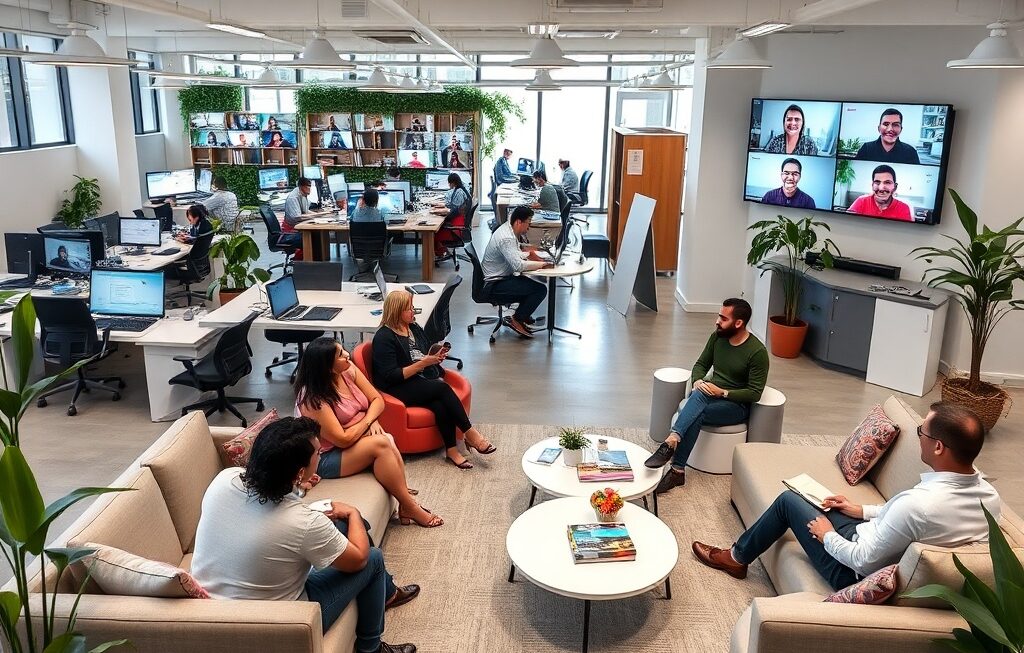Building the Future of Sustainable Business
The global business landscape is undergoing a fundamental transformation. In the past decade, sustainability has shifted from being a buzzword to a core driver of competitiveness. Companies around the world are realizing that the green economy and corporate innovation are not just ethical imperatives—they are strategic necessities that determine long-term success, profitability, and resilience.
This article explores how organizations can integrate sustainable principles into their operations, leverage innovation to address climate challenges, and thrive in an increasingly eco-conscious market.
Understanding the Green Economy
The green economy refers to an economic system that prioritizes sustainable growth, environmental protection, and social inclusion. It aims to balance economic progress with ecological stewardship. Instead of measuring success solely through GDP, the green economy considers metrics such as resource efficiency, renewable energy adoption, and carbon neutrality.
As nations transition toward this model, companies are expected to align their strategies with environmental goals. Businesses that embrace the green economy gain access to new opportunities in renewable energy, clean technology, and sustainable production. Those that resist risk being left behind in markets increasingly shaped by ESG (Environmental, Social, and Governance) expectations.
Moreover, the green economy and corporate innovation are now deeply intertwined. Innovation provides the tools and systems to make sustainability profitable and scalable—whether through new materials, circular production models, or AI-driven efficiency solutions.
Corporate Innovation: The Engine of Sustainable Growth
Corporate innovation has evolved from simply launching new products to reinventing entire business models. In the context of sustainability, innovation helps companies reduce their ecological footprint while enhancing competitiveness.
For instance, multinational corporations are investing in green technologies that minimize waste, optimize energy consumption, and promote circular economies. Automotive giants are developing electric vehicle (EV) ecosystems, while consumer goods companies are redesigning packaging to eliminate single-use plastics.
The green economy and corporate innovation thrive when organizations embed sustainability into their DNA. That means moving beyond isolated CSR projects to rethinking supply chains, product design, and resource management.
Furthermore, innovation is not confined to technology alone. Cultural innovation—changing how teams think, collaborate, and make decisions—is equally vital. Companies fostering a mindset of environmental responsibility often outperform their competitors in creativity, talent retention, and public trust.
The Economic Case for a Green Transition
Investing in sustainability is no longer just a moral decision—it’s an economic one. According to the World Economic Forum, the shift to a green economy could generate more than $10 trillion in new business opportunities by 2030.
Green innovation enhances resource efficiency, reduces regulatory risks, and opens up entirely new markets. Renewable energy, sustainable agriculture, and green construction are sectors experiencing exponential growth.
Moreover, consumer behavior is rapidly evolving. Modern buyers, especially millennials and Gen Z, are willing to pay a premium for eco-friendly products. Companies integrating green economy and corporate innovation principles are positioning themselves to capture this expanding demand.
Financial markets are also rewarding sustainability. ESG-compliant firms often enjoy higher valuations, better access to capital, and reduced borrowing costs. Institutional investors are increasingly divesting from carbon-intensive industries and supporting companies committed to clean transitions.
Green Technologies Driving Change
Technology is the backbone of sustainable transformation. From renewable energy systems to data-driven efficiency platforms, innovation enables businesses to minimize their environmental footprint while boosting productivity.
Some of the most impactful green technologies include:
- Artificial Intelligence (AI): Optimizes energy use in manufacturing and logistics.
- Internet of Things (IoT): Monitors and reduces waste through real-time tracking.
- Blockchain: Ensures transparent and ethical supply chains.
- Biotechnology: Develops sustainable materials that replace plastics and reduce emissions.
- Renewable Energy: Expands access to solar, wind, and hydrogen solutions.
By combining these technologies, companies accelerate the shift toward a regenerative economic model—one where profit and planet coexist harmoniously.
Challenges in Implementing the Green Economy
While the benefits are undeniable, adopting green economy and corporate innovation strategies is not without challenges.
- High Initial Costs: Transitioning to sustainable practices often requires significant upfront investment.
- Regulatory Complexity: Different regions impose varying environmental standards, complicating global operations.
- Cultural Resistance: Employees and stakeholders may be hesitant to change long-standing habits or processes.
- Measurement Difficulties: Quantifying sustainability impacts remains complex, especially across diverse value chains.
However, forward-thinking companies view these challenges as opportunities for innovation. By leveraging technology, partnerships, and creative financing, they turn barriers into catalysts for transformation.
Corporate Case Studies: Innovation Meets Sustainability
Global corporations are setting examples of how green economy and corporate innovation intersect successfully.
- Unilever: Achieved carbon neutrality across multiple facilities and developed a “Sustainable Living Plan” that influences every product decision.
- Tesla: Revolutionized transportation by proving that electric vehicles can be both sustainable and desirable.
- IKEA: Committed to becoming a fully circular business by 2030, investing heavily in renewable energy and sustainable materials.
- Patagonia: Reinforces a culture of repair, reuse, and responsibility, turning sustainability into a brand identity.
These companies demonstrate that environmental innovation is not a cost—it’s a competitive advantage.
Government and Policy Support
No green transition can succeed without supportive policies. Governments play a crucial role in incentivizing businesses to innovate sustainably through tax credits, grants, and carbon pricing mechanisms.
International frameworks like the Paris Agreement and the European Green Deal push corporations to commit to net-zero goals. Additionally, public-private partnerships are becoming essential for scaling green innovation globally.
When businesses, governments, and communities align their efforts, the result is a resilient and prosperous global economy driven by sustainability.
The Role of Corporate Culture in Green Innovation
A sustainable transformation begins with people. Building a culture that values the green economy and corporate innovation requires leadership commitment, employee engagement, and continuous education.
Companies are increasingly implementing green training programs, sustainability KPIs, and cross-functional innovation teams. By doing so, they empower employees to participate actively in ecological goals.
Leadership plays a decisive role as well. Executives must communicate the importance of sustainability not as an external obligation but as a shared mission. Transparent reporting, inclusive collaboration, and recognition of sustainable achievements reinforce this mindset.
The Future Outlook of Green Business
The future of global business is undeniably green. By 2035, experts predict that nearly all Fortune 500 companies will integrate sustainable innovation as a core strategic pillar. The convergence of technology, ethics, and economics will define the winners of this new era.
Organizations that act now to combine green economy and corporate innovation principles will lead the market transformation. Those who delay risk not only reputational damage but also financial decline in a rapidly evolving world.
Ultimately, embracing the green economy is not about sacrifice—it’s about reinvention. It’s about designing a business world where growth strengthens communities and protects the planet simultaneously.

In summary
The intersection of the green economy and corporate innovation represents one of the greatest opportunities in modern business history. Companies that integrate sustainability into their innovation strategies are redefining success, creating long-term value, and shaping a more resilient global economy.
The path forward demands collaboration, creativity, and courage—but the rewards are immense: cleaner growth, stronger brands, and a sustainable future for generations to come.




